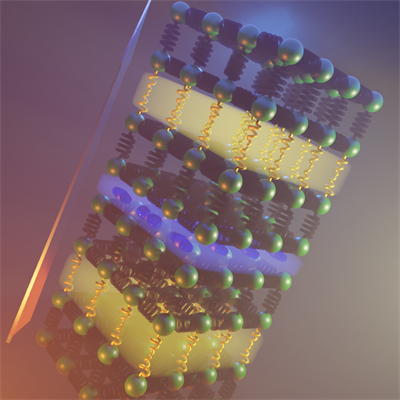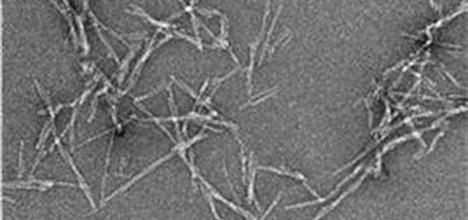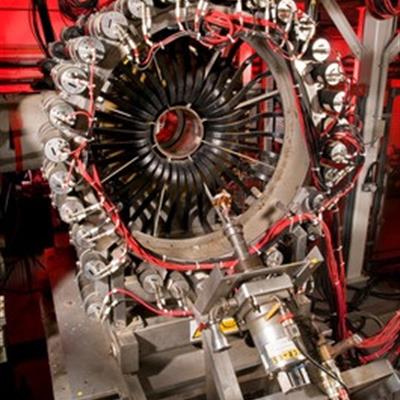The ISIS instrument IMAT was used to investigate an ammonite fossil over 66 million years old. As explained in our
, the ammonite was found to contain preserved soft tissue, an extremely rare occurrence! These tissues can be used to help deduce how the creature moved when it was alive. This paper had an Altmetric score of 318 and was published in
3. Element selection for crystalline inorganic solid discovery guided by unsupervised machine learning of experimentally explored chemistry
In third place with an Altmetric score of 305, this paper is about how researchers have developed a machine learning model that can identify new materials to be used in batteries. Our science highlight explains that the model uses existing knowledge of chemical interactions to suggest as yet untried elemental combinations that are likely to produce suitable new materials, this significantly reducing the time required to find new candidates.
4. Structural characterization of ice XIX as the second polymorph related to ice VI
Appearing in Nature Communications, and with an Altmetric score of 259, this paper documents the findings of a team of researchers at the University of Innsbruck obtained when using neutron diffraction to confirm that the new form of ice they had observed in their laboratory takes a novel structure. Our science highlight written about this paper shows that this new novel structure found confirms the existence of a new exotic form of ice called Ice XIX.

5. Low thermal conductivity in a modular inorganic material with bonding anisotropy and mismatch
With an altmetric score of 220, this paper is about the discovery of a new inorganic material with the lowest ever recorded thermal conductivity. This discovery was made by a collaborative team from the University of Liverpool, University College London and Crismat and the paper was featured as a science highlight on our website
6. Control of Nanoscale In Situ Protein Unfolding Defines Network Architecture and Mechanics of Protein Hydrogels
A group of researchers has discovered that the process of a protein unfolding plays a defining role in the structure and mechanical properties of wider protein networks. We covered this ACS Nano publication as a science highlight and it scored 85 Altmetric points.

7. Elongation rate and average length of amyloid fibrils in solution using isotope-labelled small-angle neutron scattering
With a score of 84 Altmetric points and published in RSC Chemical Biology, this paper documents the work performed using the SANS2d instrument involving the use of neutron scattering to help better understand the growth of disease-causing protein fibres as explained in our science highlight written about this paper
8. Ionic liquid facilitated melting of the metal-organic framework ZIF-8
This paper, published in Nature Communications, shows how interactions related to the ionic liquids can help the melting process of the metal organic framework ZIF-8. The ionic liquid helped prevent decomposition and helped stabilisation. This paper had an altmetrics score of 83.
 9. Chiral singlet superconductivity in the weakly correlated metal LaPt3P
9. Chiral singlet superconductivity in the weakly correlated metal LaPt3P
The MuSR instrument was used to investigate the superconductive properties of a material belonging to the chiral class of superconductors. Our Science highlight written about this paper explains how the experimental results of this material showed its unconventional nature of superconductivity. This paper had an Altmetric score of 79.
10. 2021 Roadmap for sodium-ion batteries
This paper is a collection of articles detailing the plans to begin leaving behind the current Lithium-ion batteries in favour of Sodium-ion batteries, the reason for this being questions over the sustainability and environmental impact of the lithium supply; sodium has similar electrochemical properties to lithium and is found in high abundance. This papr featured on our website as a science highlight and had an altmetric score of 72.
